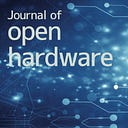Open Hardware supports US Industry, Jobs, and Public Wealth

This blog is part of a series on open hardware and key messages for public policy. Read the introduction and access other #OHpolicy blogs here.
By Alexandra Novak, Woodrow Wilson Center
Open Source Hardware (OSH) is emerging as a key resource for rapid innovation and cost reduction for various sectors of industry. Companies with OSH products have already proved commercial viability and excellence, especially in science and technology. Adafruit, a company that sells open source electronics, generated $45 million in revenue in 2016. In 2014, Adafruit was ranked 11 in the top 20 U.S. manufacturing companies and no. 1 in New York City. The open source 3D printer RepRap’s design was adopted to create one of the largest 3D printing companies in the world, Prusa. In addition to their commercial success, both Adafruit and RepRap’s OSH serve as building blocks for new products, and thus are foundations for new industries, businesses, and audiences. For instance, Safecast, a mobile Geiger counter, is built using Adafruit’s GPS module.
Not only does OSH support industry, but it can generate US jobs. To start, OSH enables distributed manufacturing, where small batches of customized products are fabricated locally. Distributed manufacturing of open source hardware met demands for PPE during the recent COVID-19 shortage, when traditional supply chains failed. Beyond COVID-19, decentralized fabrication centers near academic and research institutions could locally manufacture specialized scientific hardware, instead of being produced in a centralized, offshore manufacturing plant.
OSH also has the potential to create service industry jobs to address principal challenges with OSH: these tools need to meet standards and quality control. This is especially true for scientific instrumentation, where calibration to standards are essential for reproducible and repeatable experiments. Additionally, OSH often requires in-depth technical knowledge to modify designs and customize tools. Validation and calibration services, such as the review performed by NIH’s 3D Print Exchange, would ensure OSH for science meets quality specifications, while creating jobs for validation labs and standards organizations. Jobs would similarly be generated through selling trainings, installations, technical support, workshops, and other expertise as a service to assist researchers and users lacking certain technological skills for OSH, as has driven many jobs and revenue generation in the Open Source Software(OSS) industry. Red Hat, a prominent OSS company, has been able to acquire over $1 billion dollars in revenue from providing service for open source products.
The success of OSH companies is partly due to their ability to innovate and improve their products, faster. By making the design files to hardware open source, more people are able to take part in the development and testing of a product. The inventor of RepRap described the open source community as key to resolving issues while developing the tool, stating “There was never a point when we were stuck. If X didn’t work, we still had Y and Z to go back on.” With more hands on deck for troubleshooting, OSH companies like RepRap are saving time and money in the validation and testing of their products.
Companies using OSH are more resilient to market changes. Proprietary tools can fall into “IP Obesity,” where they rely on filing suits against copiers who infringe their IP rights. Open source, on the other hand, motivates industries to continually remain in tune with market trends to outcompete potential copiers. As a result, open hardware companies consistently bring more novel, up-to-date products to market. Furthermore, OSH encourages end-user innovation and customization. Using the publicly available design files, customers are free to build, modify, and sell the tool to meet their personal needs, creating new markets and industries. This feature is especially pertinent to scientific instrumentation, as many customers require hardware for diverse research applications and very specific experiments. This is demonstrated by OpenBCI, which sells open source biosensing kits and tools. The products appeal to a larger market of users than proprietary versions, due to their versatility in meeting different research goals. OpenBCI has also inspired the innovation of new products, such as IDNU Technologies’s OpenBCI-compatible dry electrodes.
In addition to supporting industry innovation, OSH helps industry save money, driving down the product costs for consumers and increasing finances to invest in new products. OSH is typically not patented and other Intellectual Property (IP) rights, other than trademarks are permissively licensed using standard legal tools. This reduces legal fees and licensing fees. R&D costs can also be reduced by leveraging previous OSH designs and with parts of development being outsourced to contributing volunteers, spanning from retired engineers to hobbyists. Finally, open sourcing a product can reduce marketing and product support costs. As individuals contribute to open source projects, they tend to form community through virtual forums. These forums can serve as a place for people to answer each other’s questions and resolve problems. The community and online tools generated from open source projects also provides a targeted customer base and a space for informal marketing, reducing costs for advertising and market research.
OSH’s ability to reduce costs, accelerate innovation, and create new jobs would benefit all sectors of industry, but above all transform STEM. From these benefits, it is evident that OSH is an extremely valuable asset to US industry, the economy, and the public. With policy support along the way, the opportunities are limitless in how OSH will continue to strengthen the US as a global leader in industry, STEM, and beyond.
